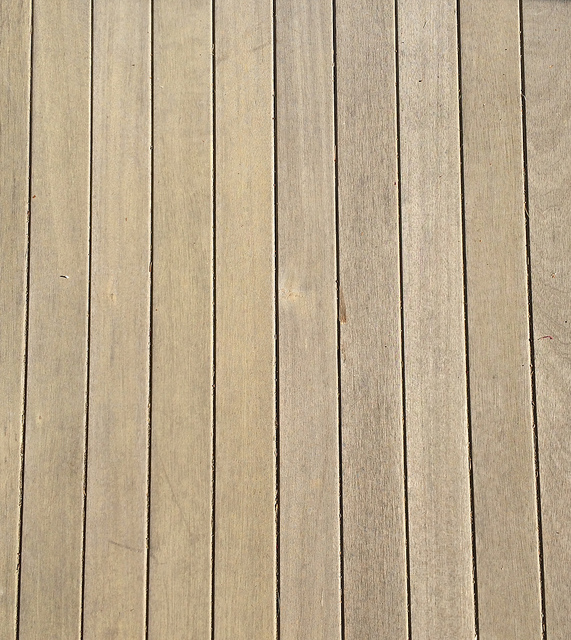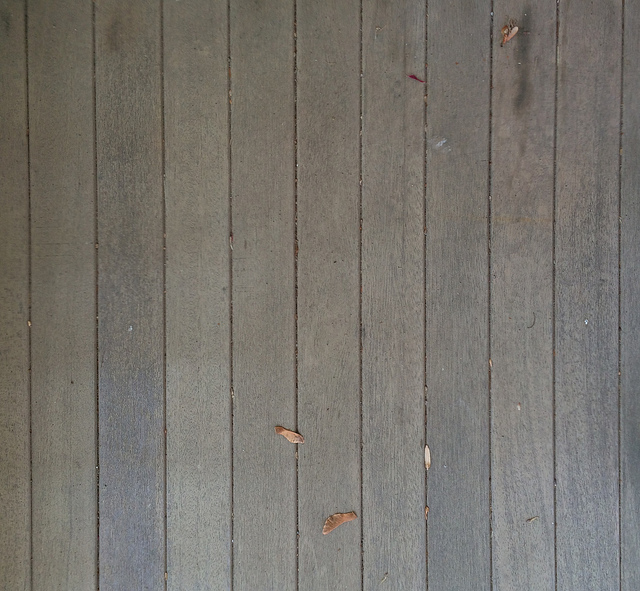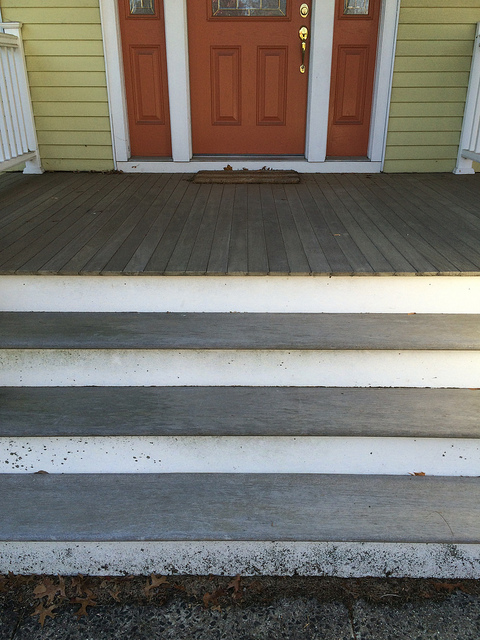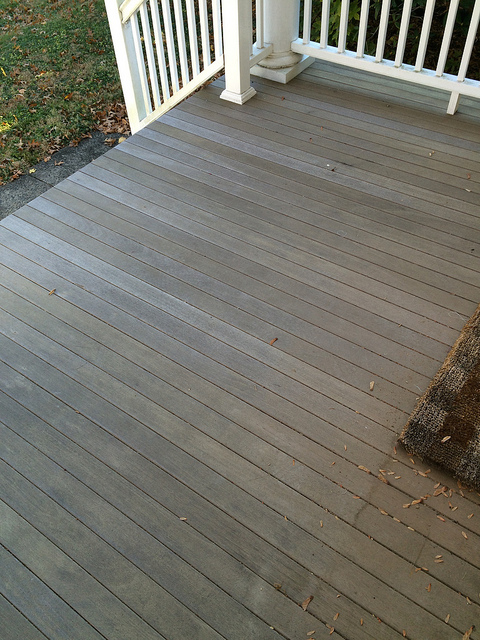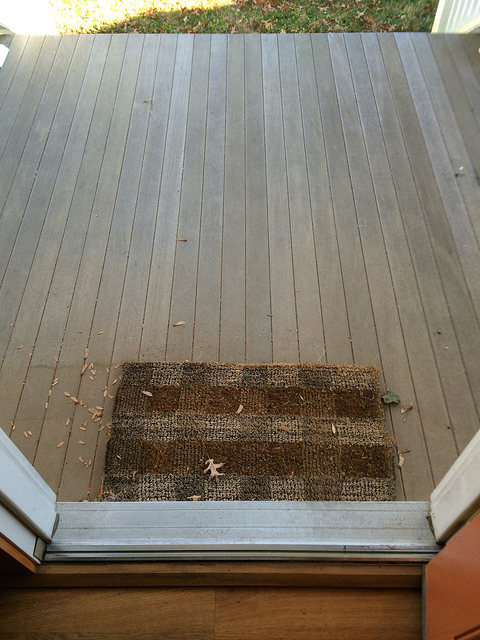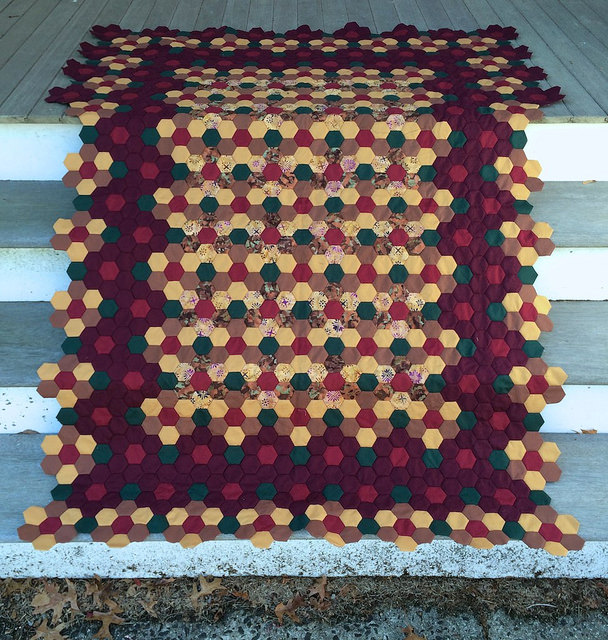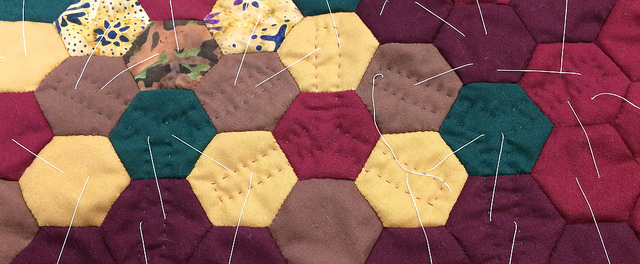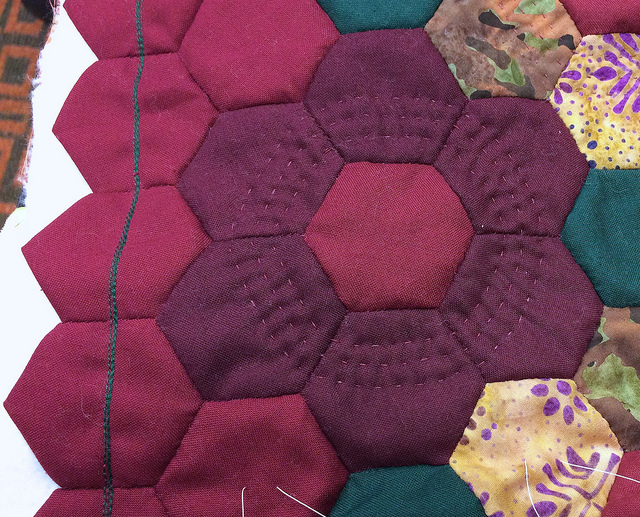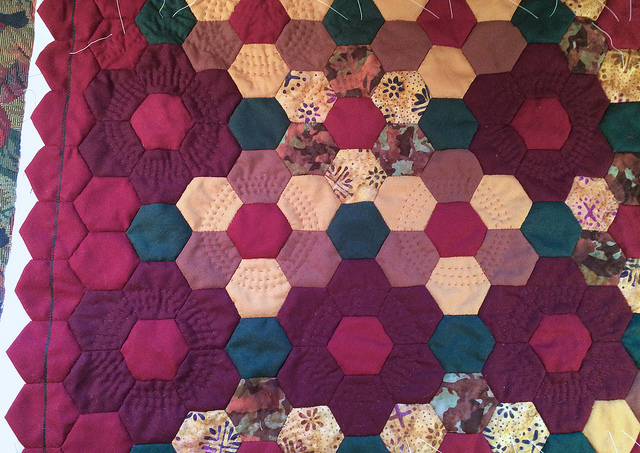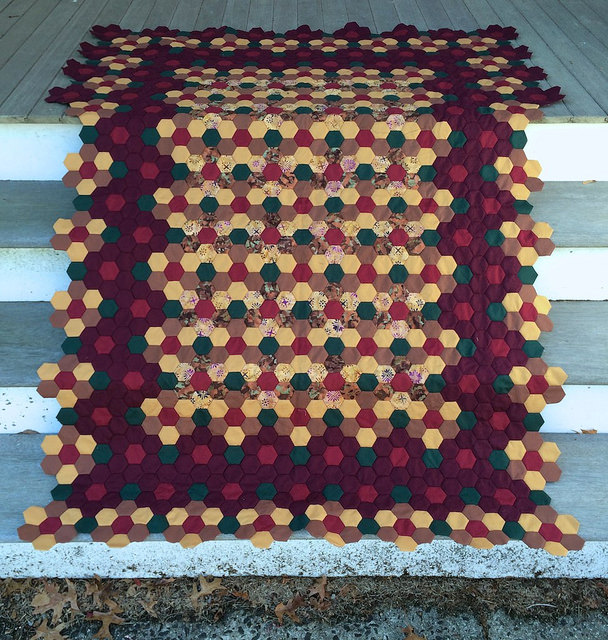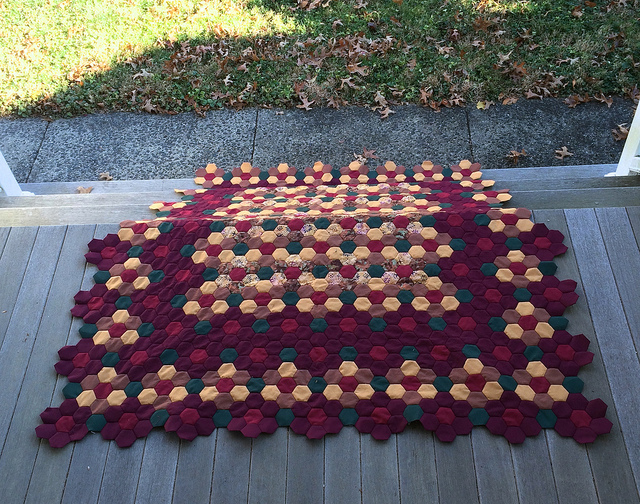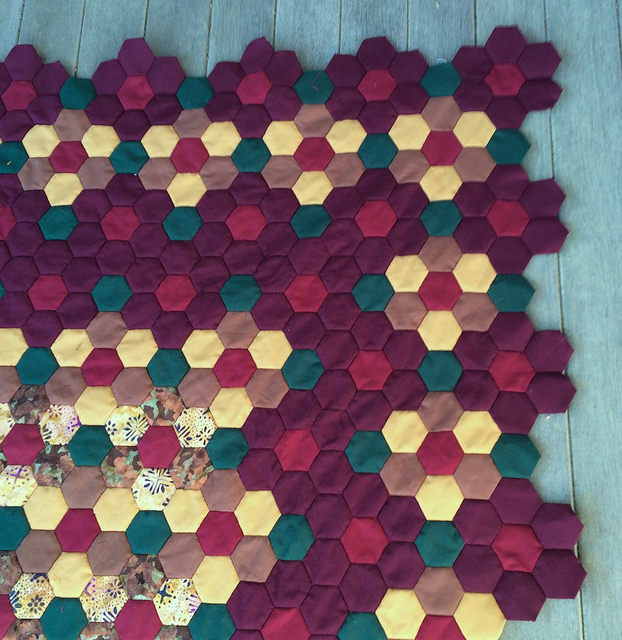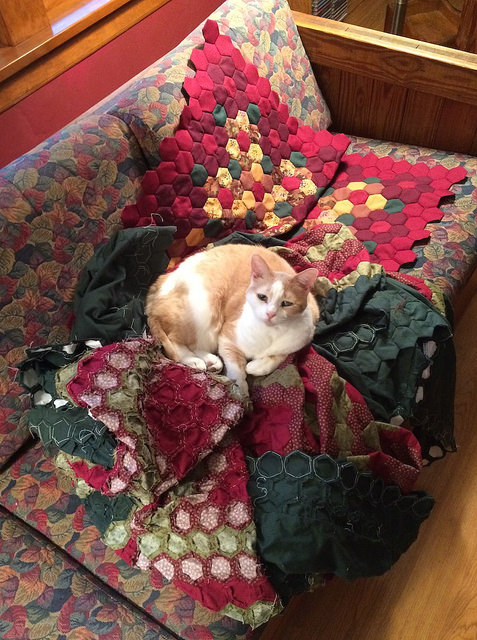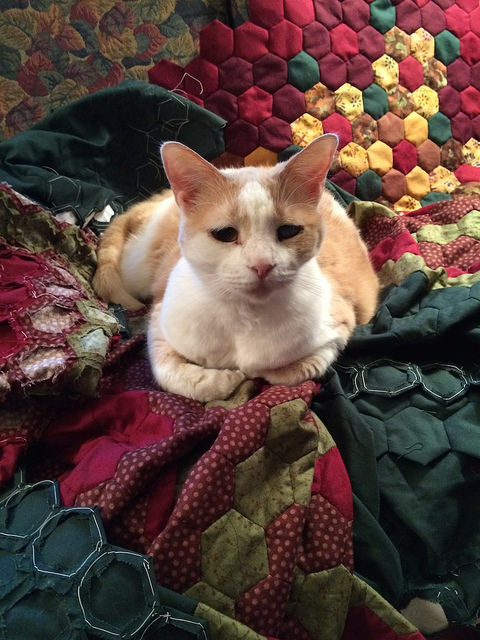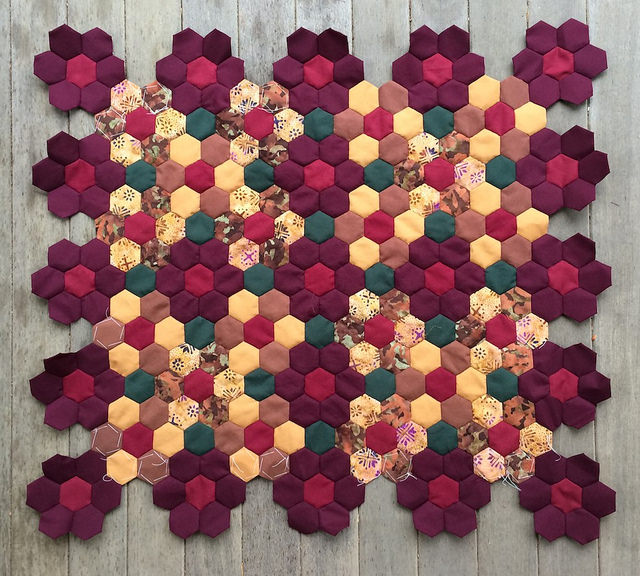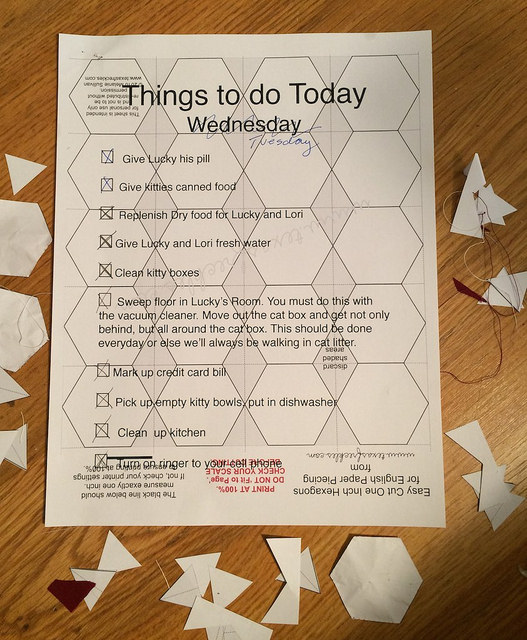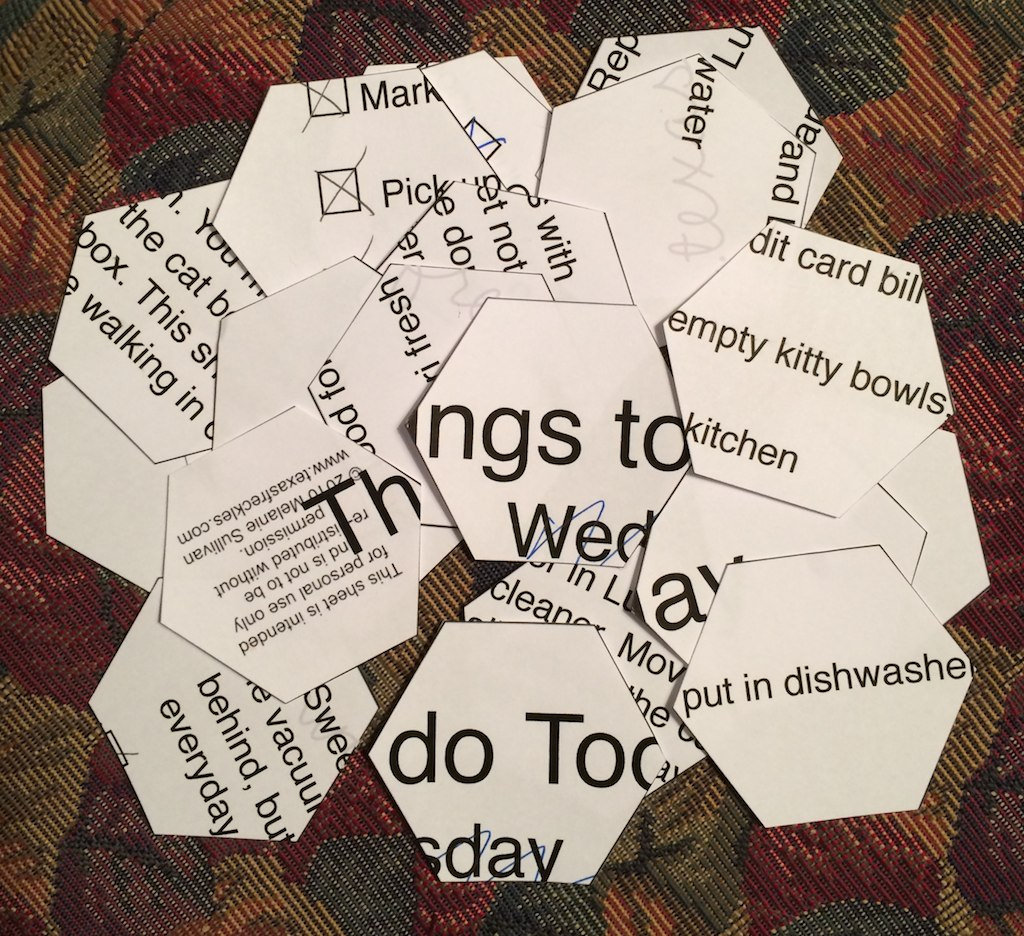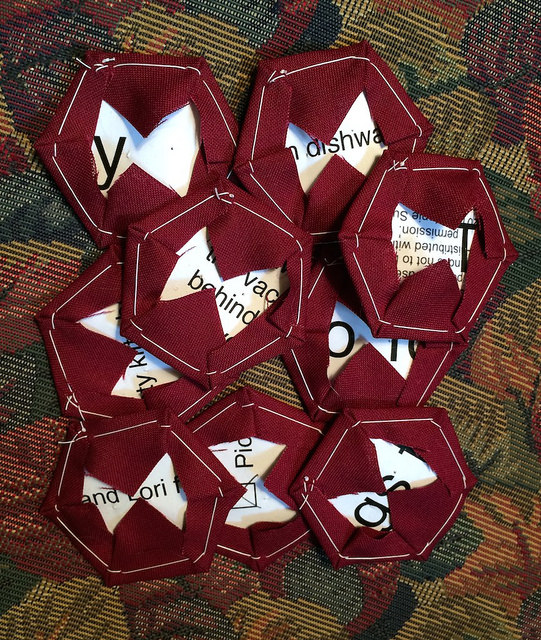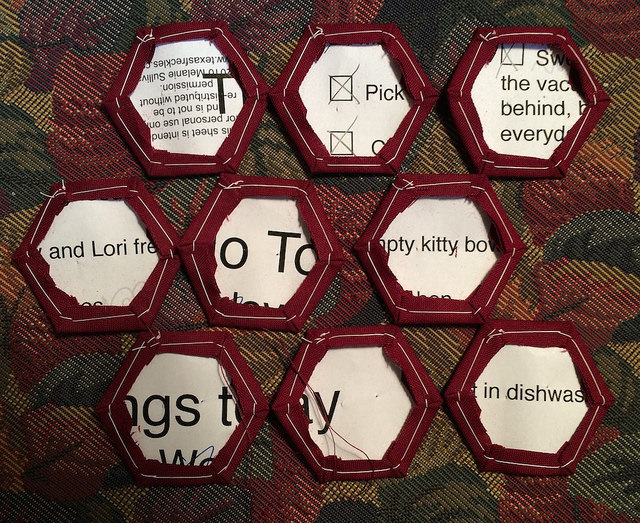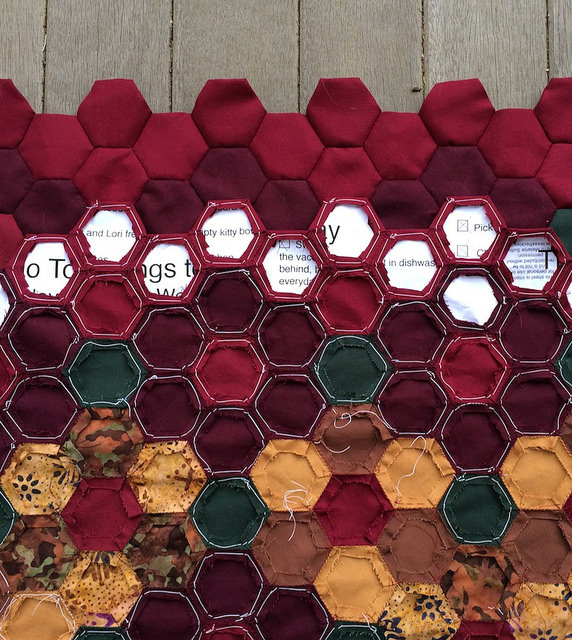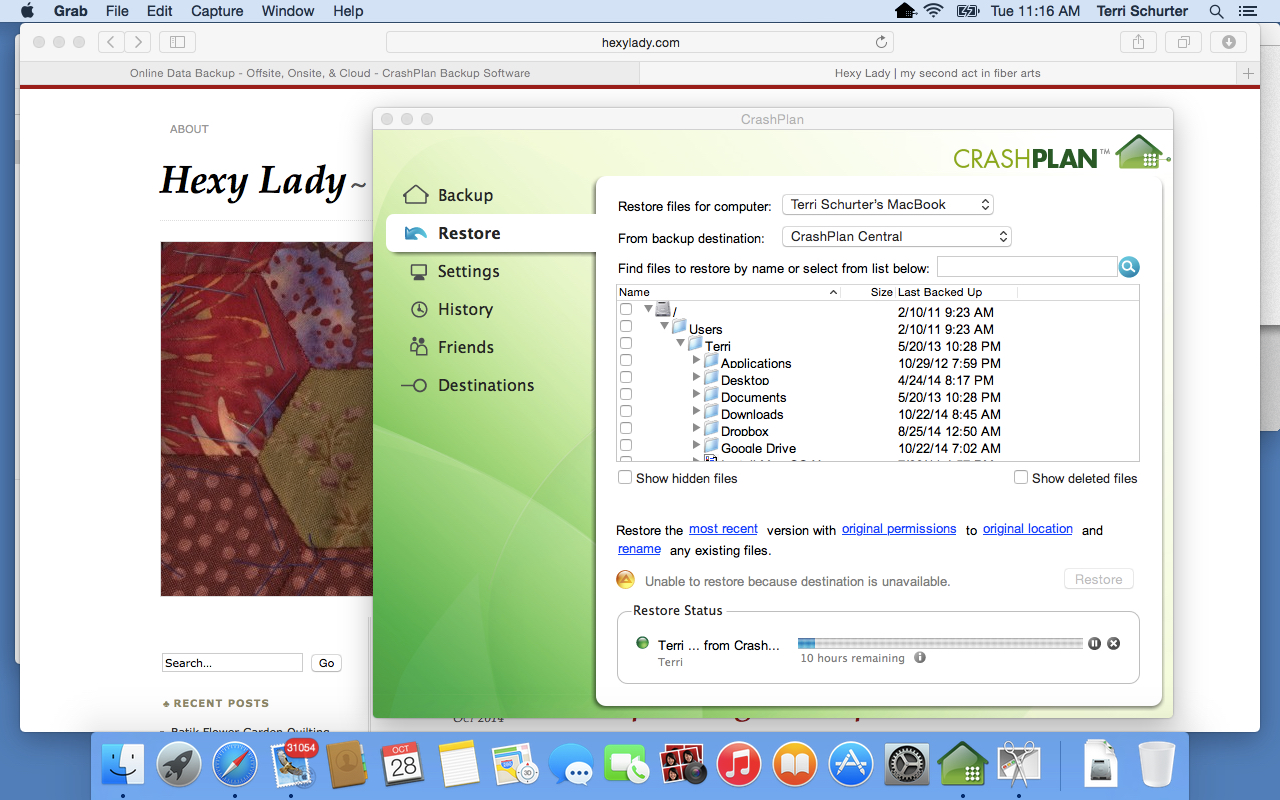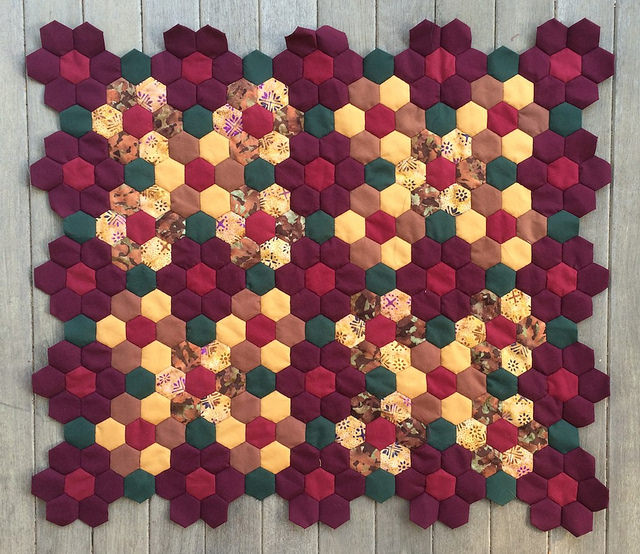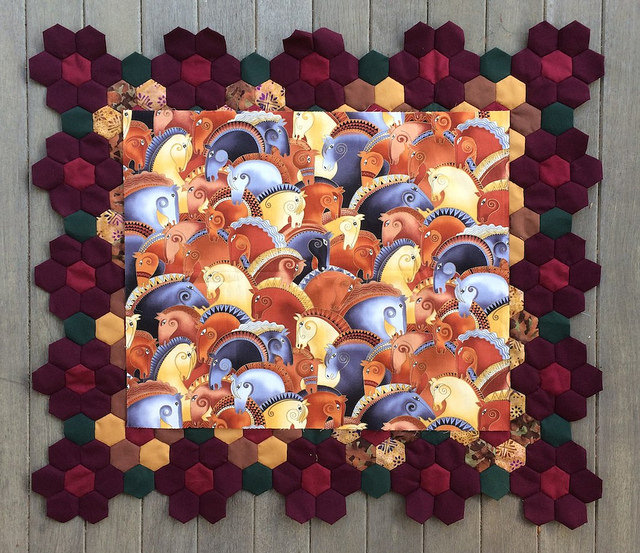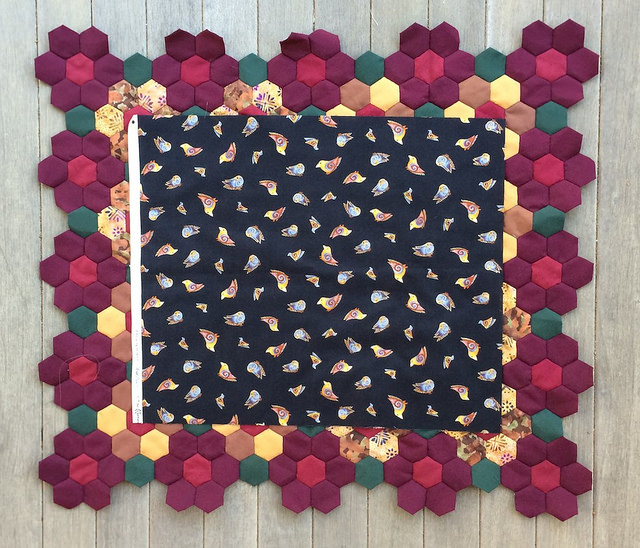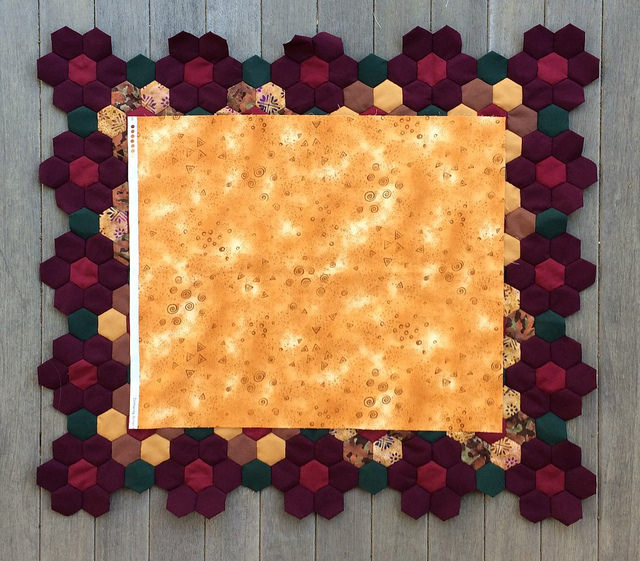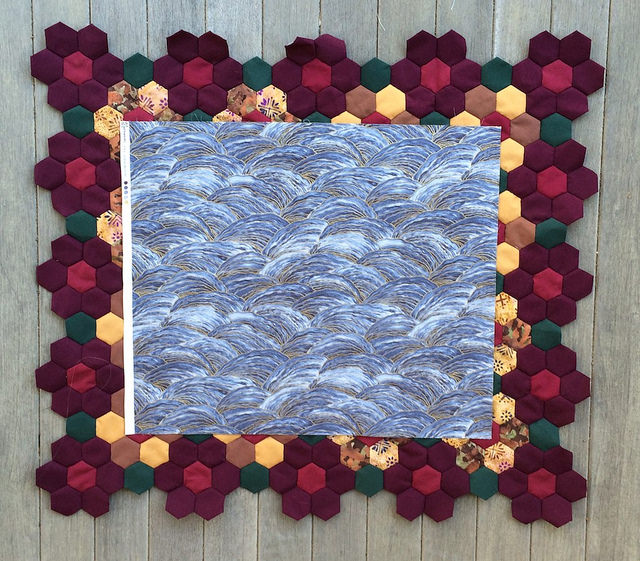The Batik Flower Garden quilting sample piece is totally finished. I finished the quilting this week, and I did the binding yesterday.
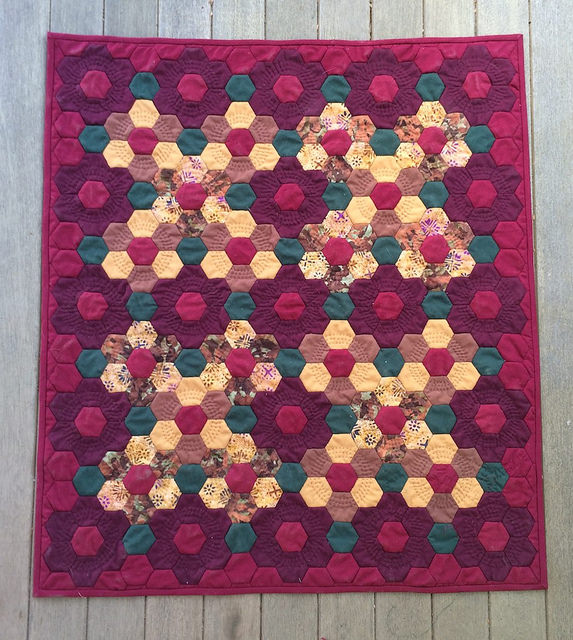
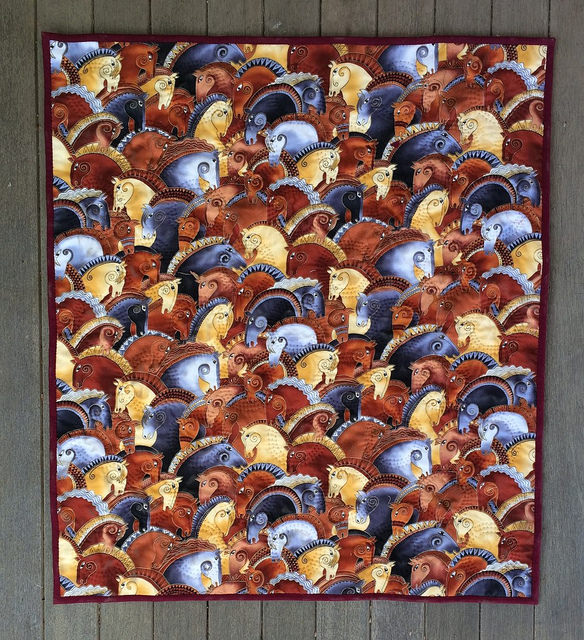
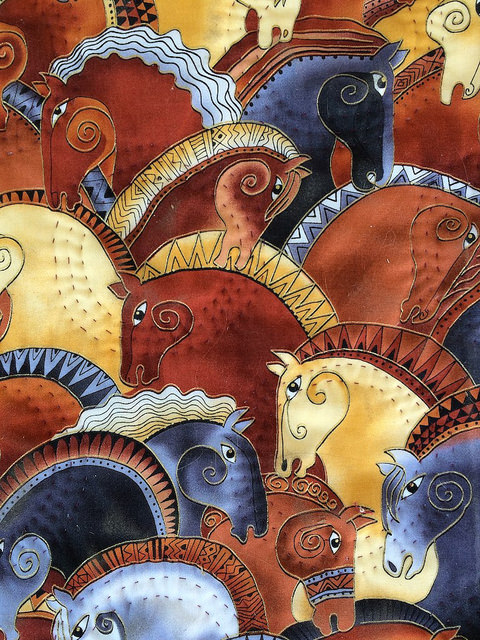 The size turned out to be 28.5 inches by 32.25 inches, which is a little small for a baby quilt, but could conceivably work well as a carriage cover.
The size turned out to be 28.5 inches by 32.25 inches, which is a little small for a baby quilt, but could conceivably work well as a carriage cover.
I absolutely love the circular concentric quilting. Three concentric circles gives a nice density to the quilting, and the circles emphasize the flowers, while leaving the green joining hexagons in a space that is not quilted at all. The quilting shows up best on the solid caramel and brown flowers. It shows up second best on the burgundy flowers, and it nearly disappears on the batik patterned flowers, as the photographs below show:

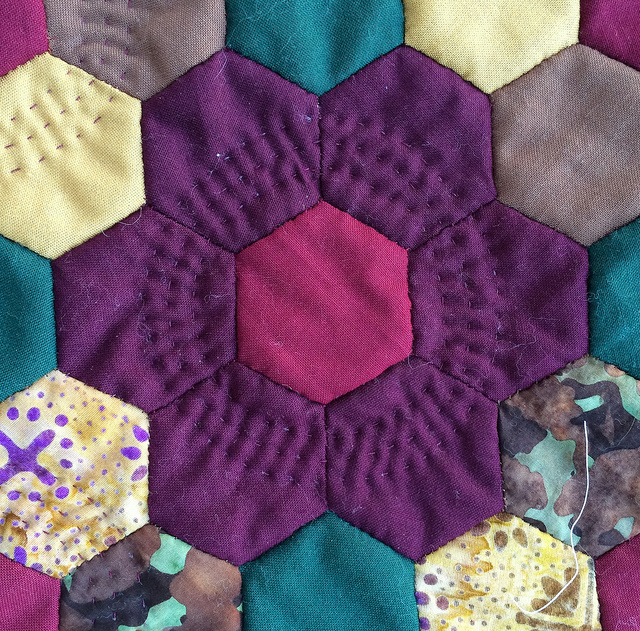
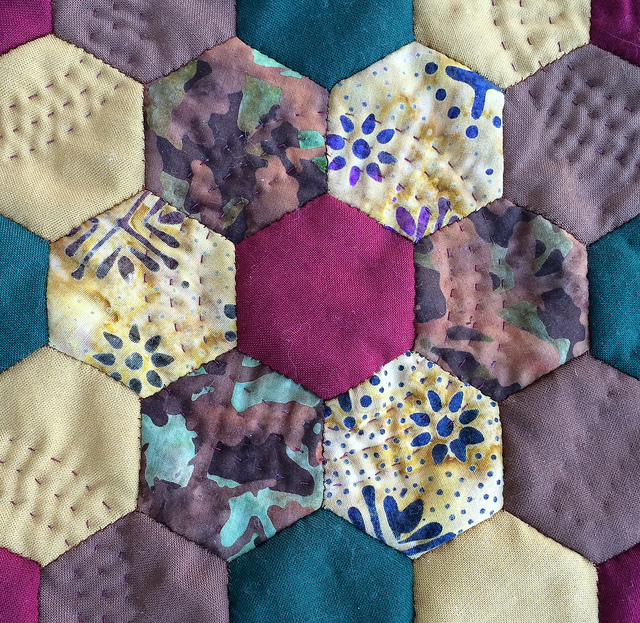
Since I may be giving this quilt away, and if I do it will be the first quilted piece I have ever given away, I thought it might be worthwhile to know how many hours of my life are in it before I decide to give it a new loving home.
Each flower took 12.5 minutes to quilt. I timed one of them, so I know.
There are 41 flowers in the quilt, which brings the hand quilting time for this quilt to a total of 8 hours and 32.5 minutes. we will round that down to 8 hours and 30 minutes.
I decided to keep track of the time on the binding. It broke down like this:
15 minutes – Sewing around the edge of the last border of hexagons multiple times to reinforce the seams and to mark the cutting line which I would follow after the quilting was finished
12 minutes – Cutting off partial hexagons, excess batting, and excess backing fabric
30 minutes – Preparation of binding: cutting, joining, and pressing of binding
43 minutes – Application of binding to the front of the piece by machine
140 minutes – Hand sewing the binding to the back of the piece
The total time spent on binding came to 4 hours.
Here are some photographs of the binding process:
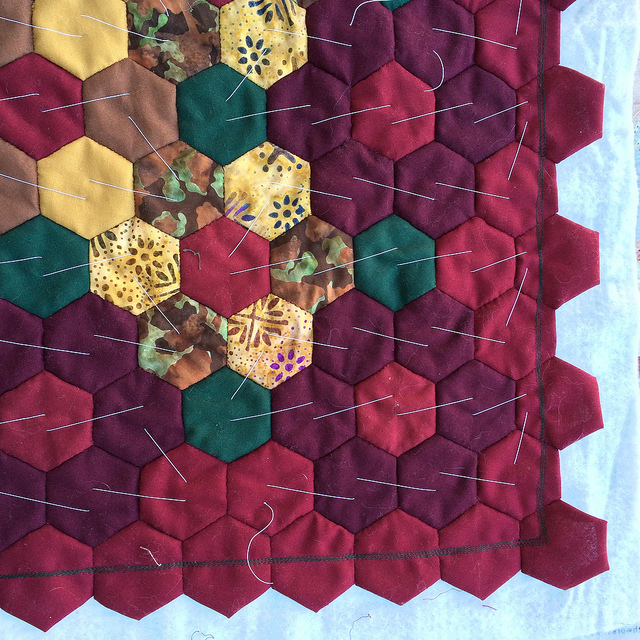
I sew around the final edge of hexagons multiple times to reinforce the seams and to indicate where to cut when it is time to apply the binding.
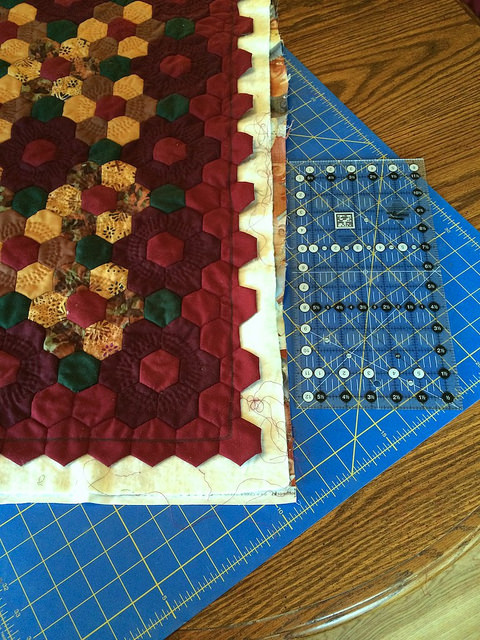
Initially I tried cutting away the excess border with a rotary cutter. I only tried about six inches that way. I found that using the ruler and rotary cuter did not give me the feeling of control that I needed.

I ended up cutting away some of my stitching, so I switched to using a pair of scissors, which I found to be a much more satisfactory solution.
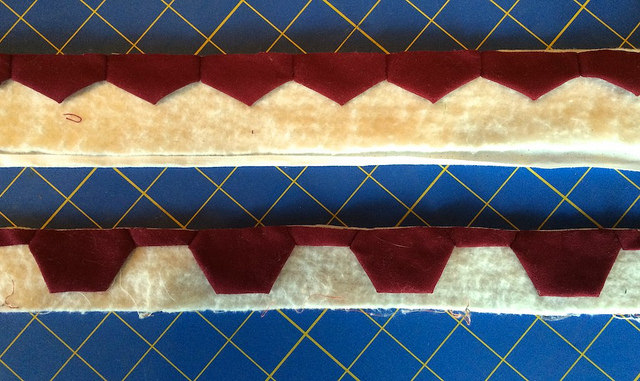
These are the portions of the hexagons that I ended up cutting off. I cut away half of the hexagons on the vertical borders. I cut away a portion on the horizontal borders that would give me the same size border as I had with the vertical hexagons. How much to take away and leave behind is a personal decision and may change depending on the piece.

Here you can get a good look at the multiple rows of stitching I used to reinforce the seams of the hexagons that ended up having portions discarded in the binding process. I believe that I ended up doing four or five rows of stitches.
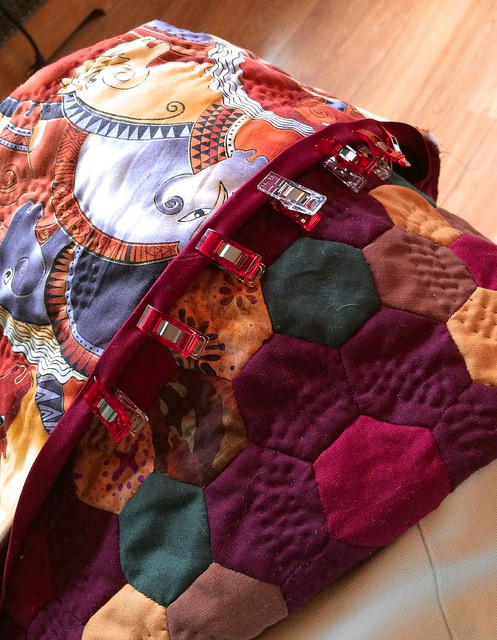
I’ll estimate the time spent on hand piecing the quilt top using my 10 minutes per hexagon estimate. This estimate takes into account the cutting of papers, cutting of fabric squares, basting of hexagons, and the sewing together of the seams. I won’t bother to include the hexagons on the final border in my count. There are 351 full hexagons in the quilt top, so it took a total of 58 hours and 30 minutes to piece.
Adding up all of the figures from above, the quilt took a total of 71 hours to complete, but I just realized that I need to add in the time spent basting in preparation for quilting, which is probably about two hours, so it comes to 73 hours total… 73 hours of my life. That’s almost two full weeks at a full time job.
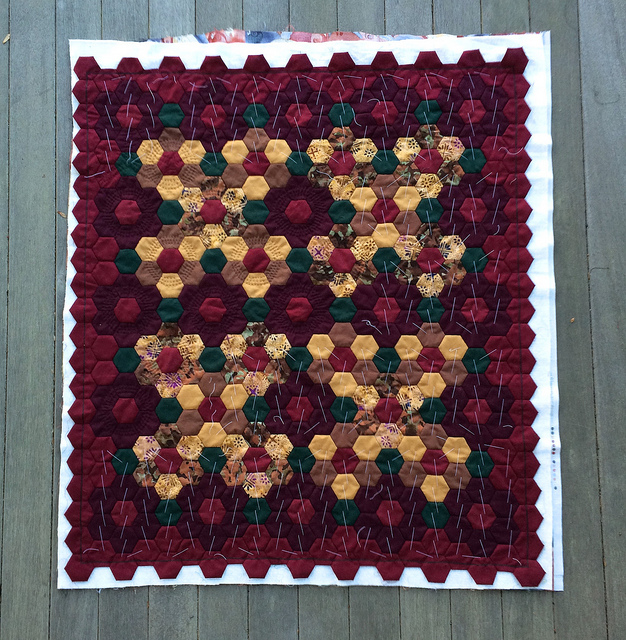
I was going to try to do some calculations based on the above figures to come up with an amount of time it takes to piece a square foot of hexagons, but then I got the brilliant idea of masking off a 12″ x 12″ area of the quilt and simply counting the number of hexagons, and using my estimate of 10 minutes per hexagon to come up with a time per square foot for piecing.
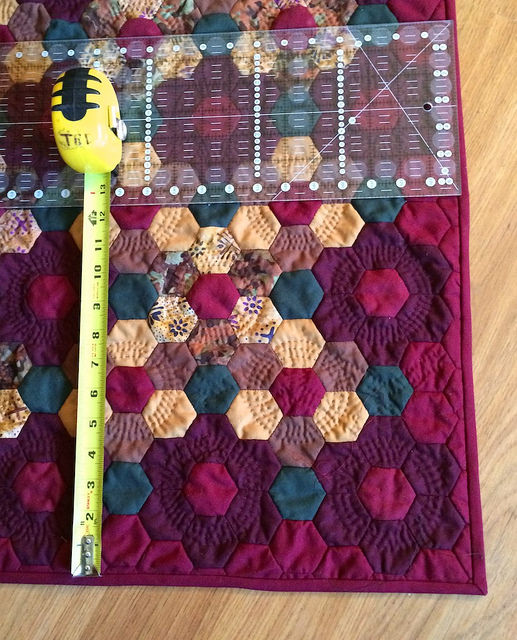 I came up with 60 hexagons per square foot for a total of ten hours to piece a square foot. That’s a very convenient estimate based on ten minutes per hexagon, which is probably the slowest speed at which I work. I doubt I can work as fast as 5 minutes per hexagon, but I can probably do better than 10 minutes if I try. However, English Paper Piecing is not about rushing. It is about relaxing and enjoying, so the 10 minute estimate is probably a good one.
I came up with 60 hexagons per square foot for a total of ten hours to piece a square foot. That’s a very convenient estimate based on ten minutes per hexagon, which is probably the slowest speed at which I work. I doubt I can work as fast as 5 minutes per hexagon, but I can probably do better than 10 minutes if I try. However, English Paper Piecing is not about rushing. It is about relaxing and enjoying, so the 10 minute estimate is probably a good one.
I am happy with almost everything about this quilt. The only thing I am not happy with are my corners on my binding. They look very good from the front. However, I am dissatisfied with the way they look on the back. No one but a quilter would notice or care, but I do.
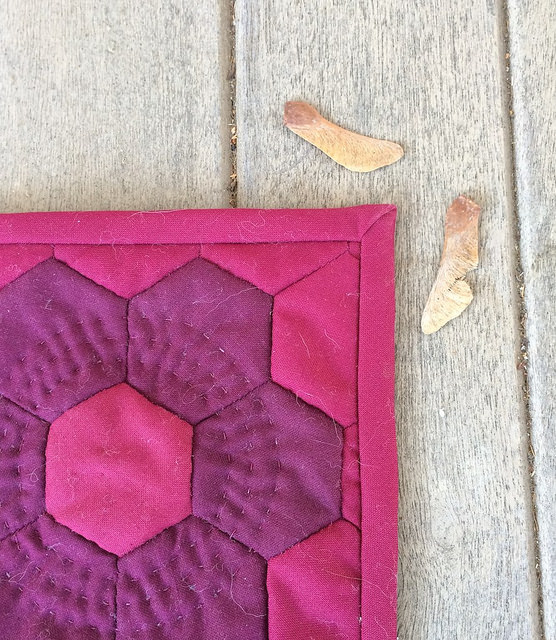
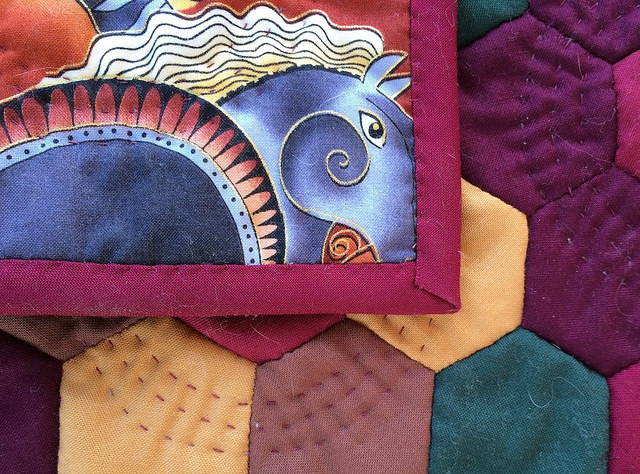
I want them to look like they are beautifully mitered. As it was, I fussed with these corners a great deal when I did the hand sewing on the back, In spite of that, I just could not make any one of them look like I wanted them to. I should be able to conquer the 90 degree binding corners, and I will.
I feel as if I have pretty well mastered the odd angled edges when binding. They seem to be more forgiving. I conquered odd angled binding edges on the piece below:
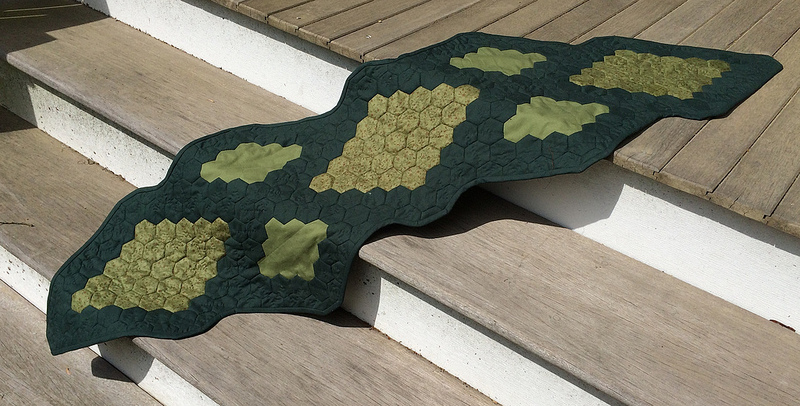

Yet 90 degree angles still have me flustered.
I took a course at the Pennington Quilt Works about binding, but I seemed to have missed something about the 90 degree corners. I’m going to make it a point to research this further. I’m going to look at a number of tutorials, and I am going to do many practice corners before I bind the large Batik Flower Garden quilt. It’s going to have 90 degree angles. The Diamond Quilt will not have any 90 degree angles, so I will be quilting and binding The Diamond Quilt top next.
I figure that it would take nine of these small quilts to equal the size of the queen sized Batik Flower Garden Quilt that I am making, so that gives me an estimate of 657 hours to complete the queen sized quilt give or take 50 hours. What’s 50 hours anyway on a large quilt?
I am linking back to Jessica’s Star Count as usual. Those of you coming here through Jessica’s blog might enjoy seeing the post about my photo staging area that I published since the last Star Count.
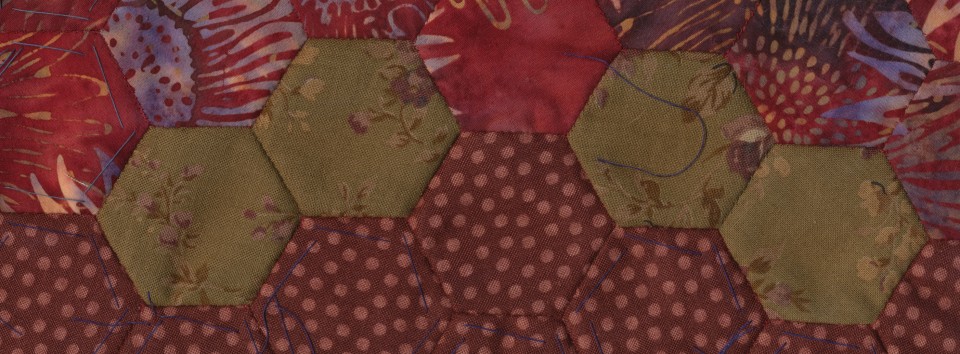
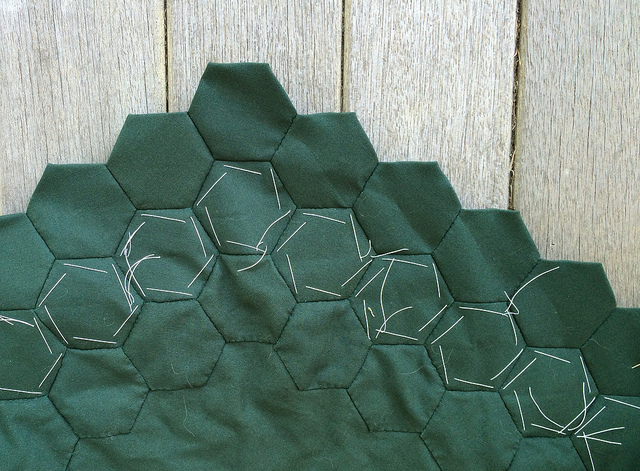

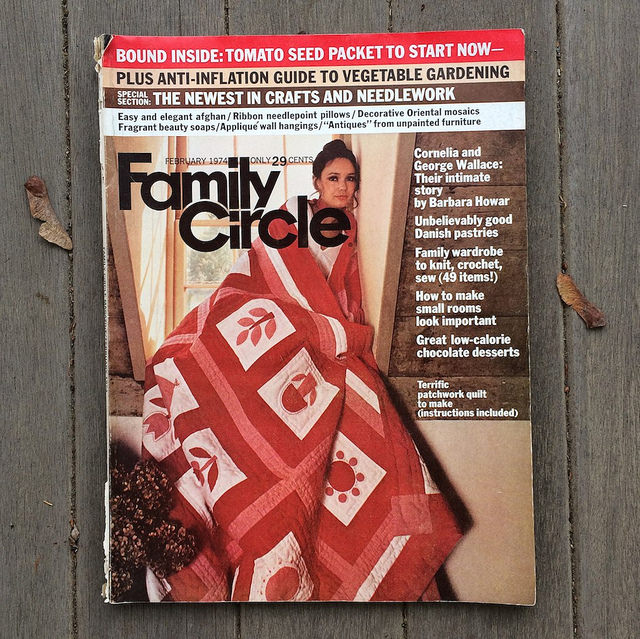
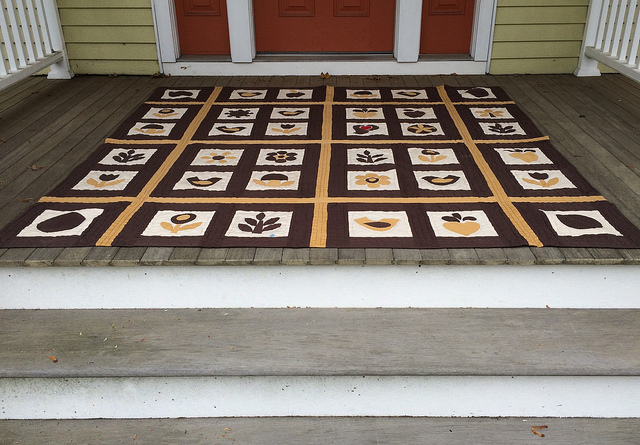
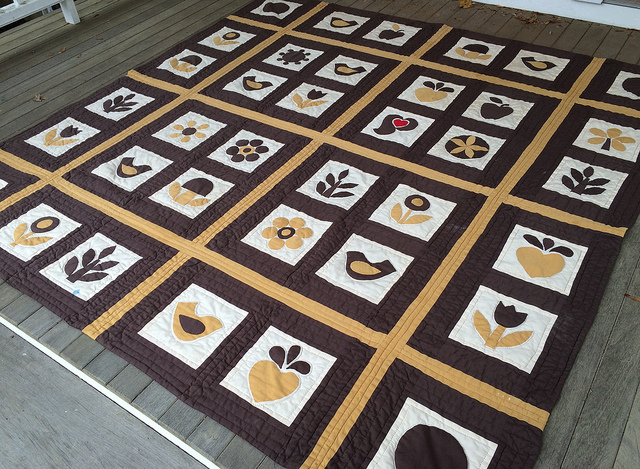
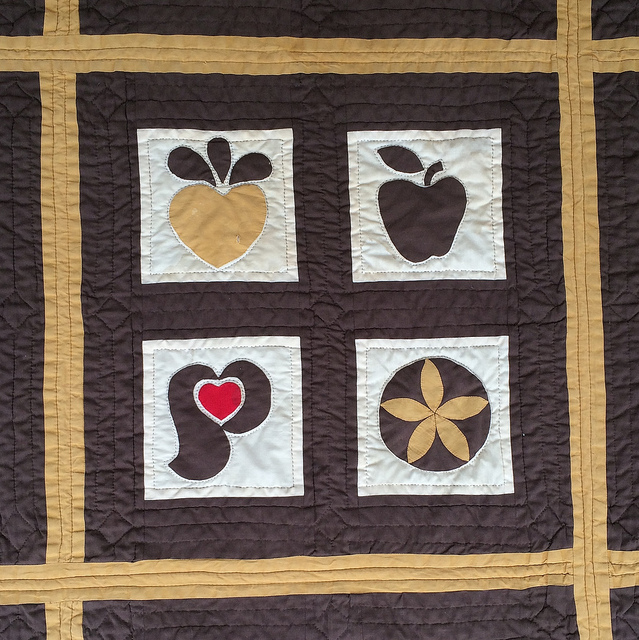
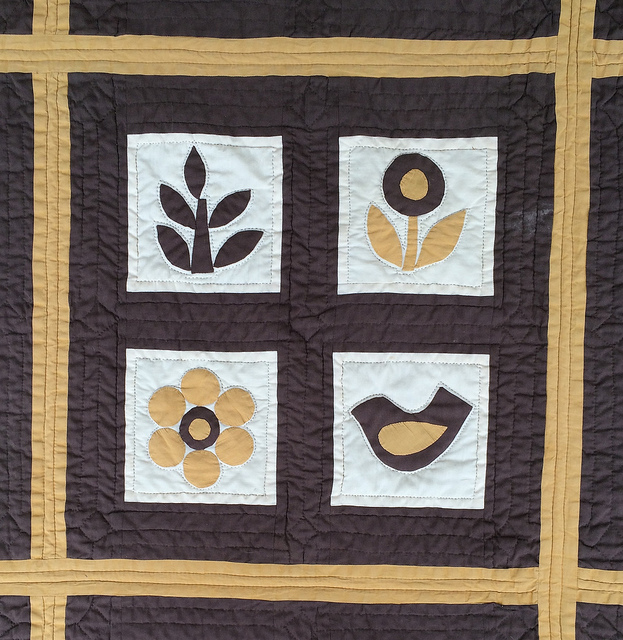
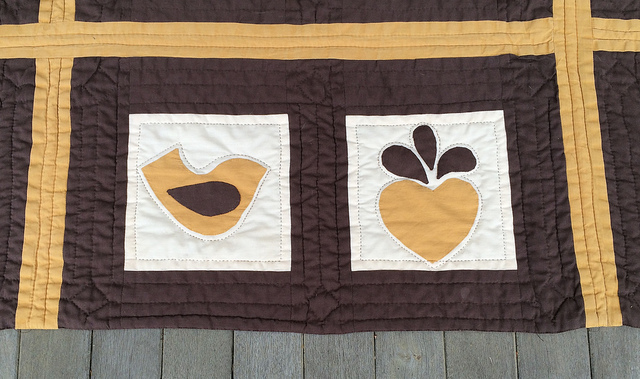
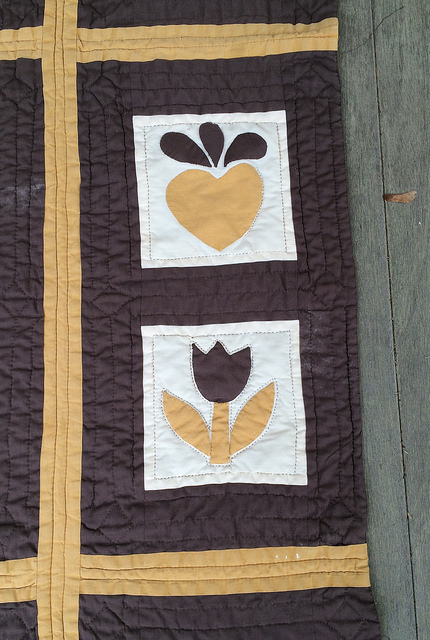
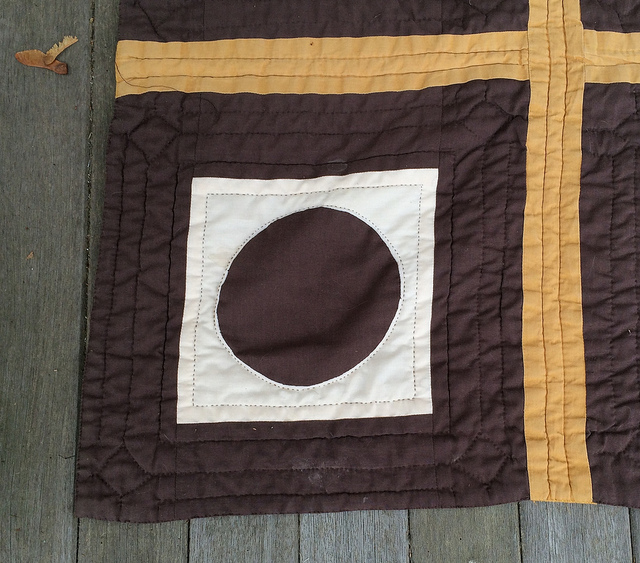

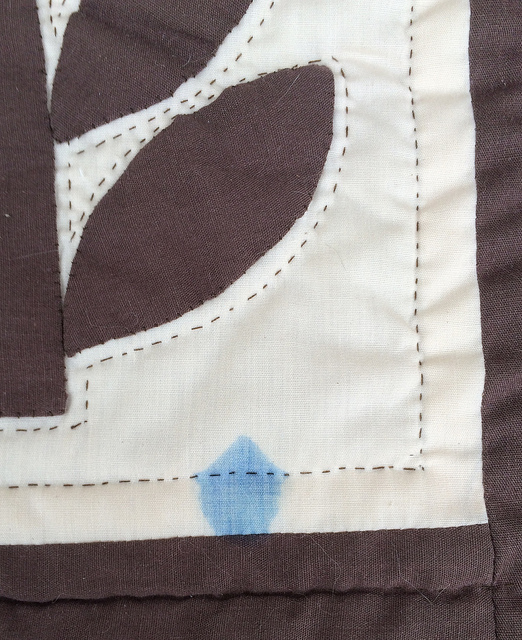
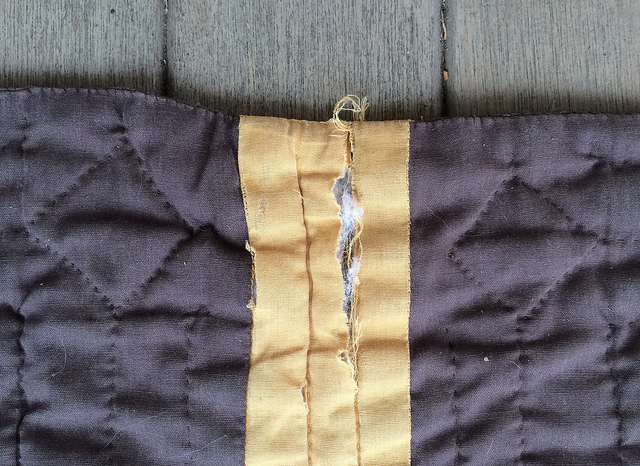
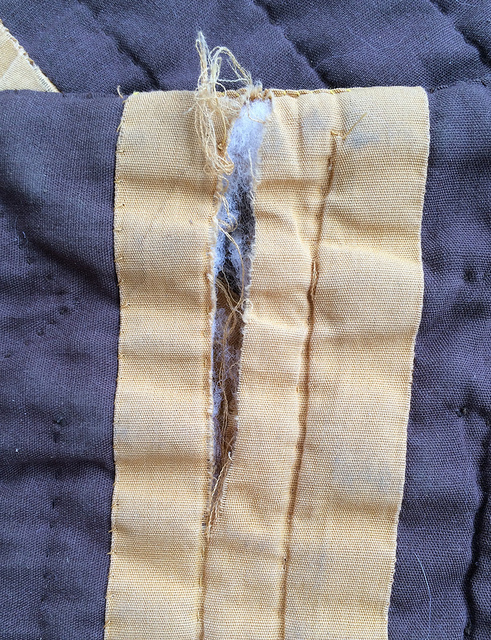
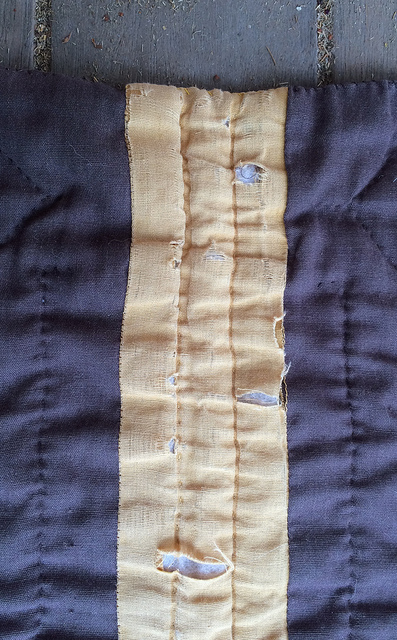
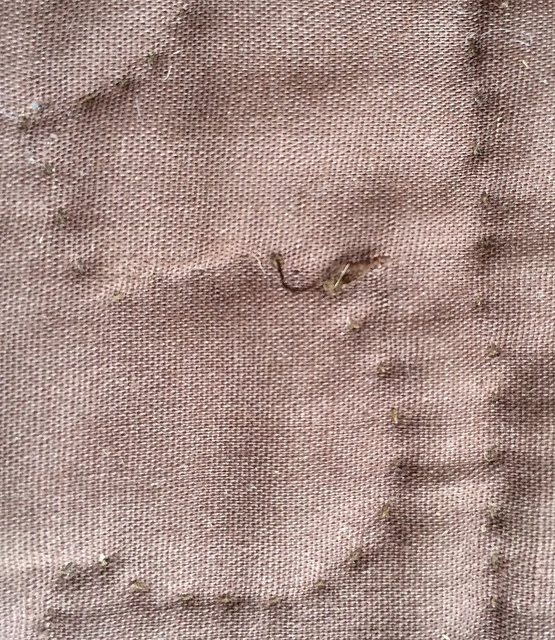
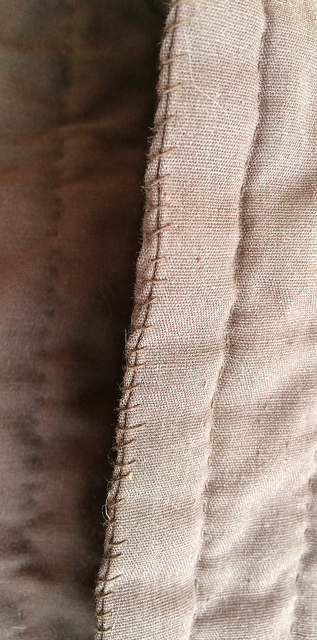
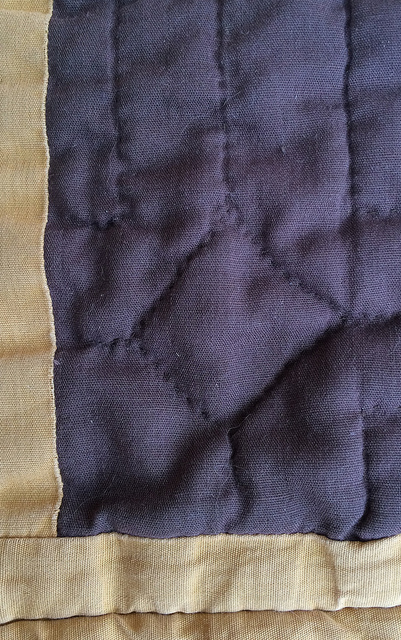
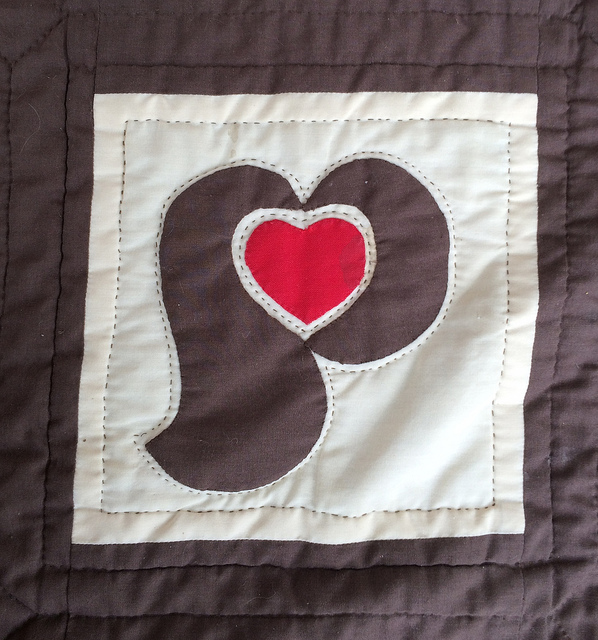
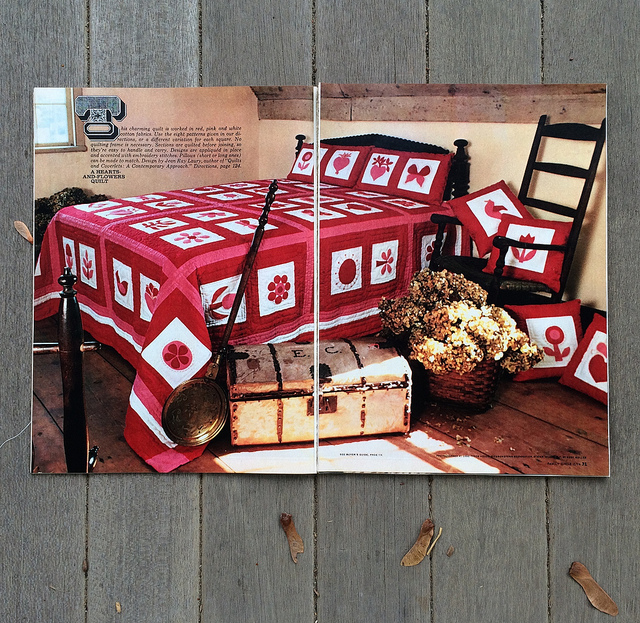


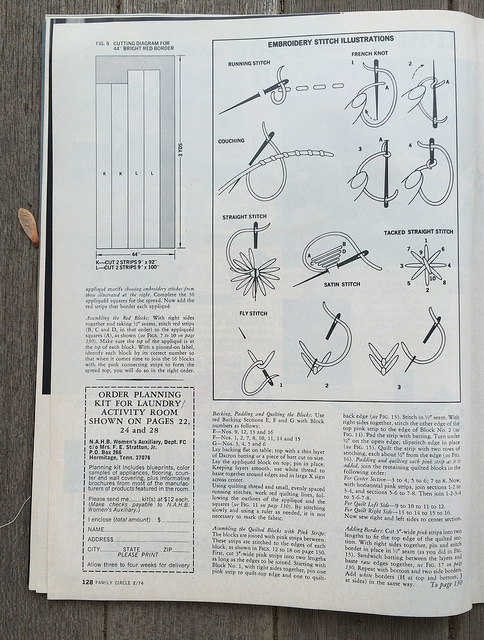
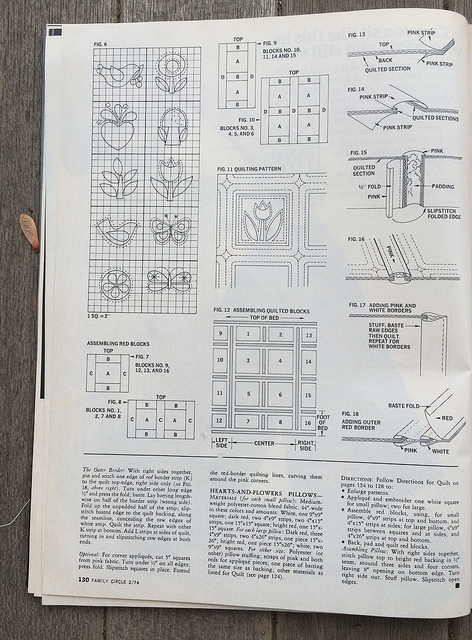


















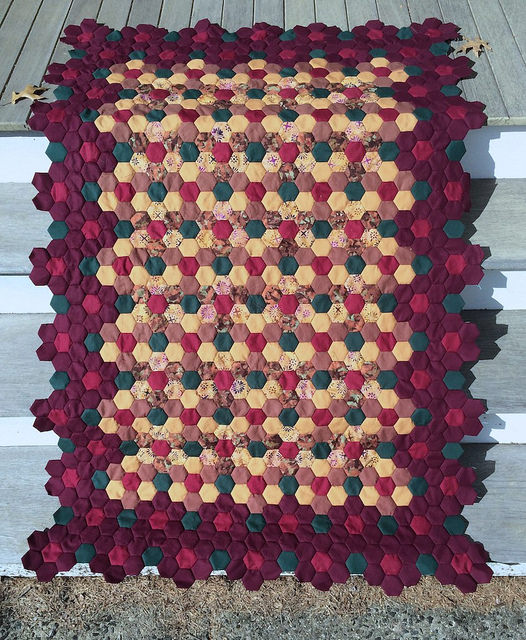
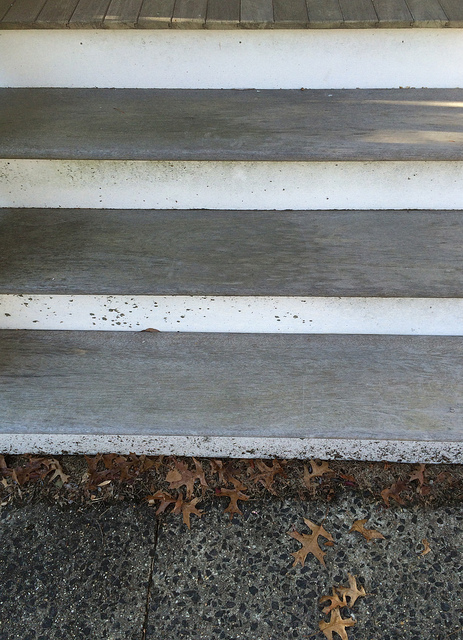
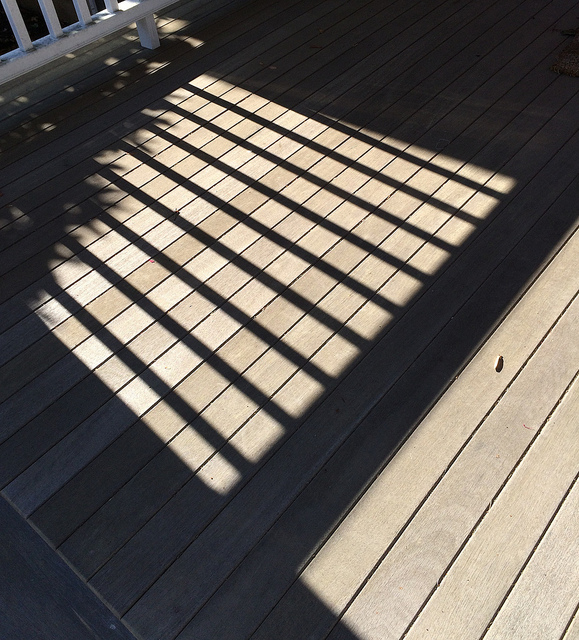
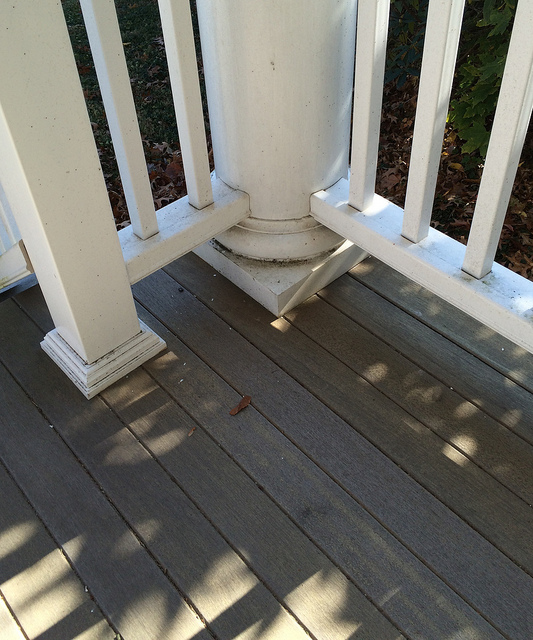 And there is a nice railing to hang things from too.
And there is a nice railing to hang things from too.
